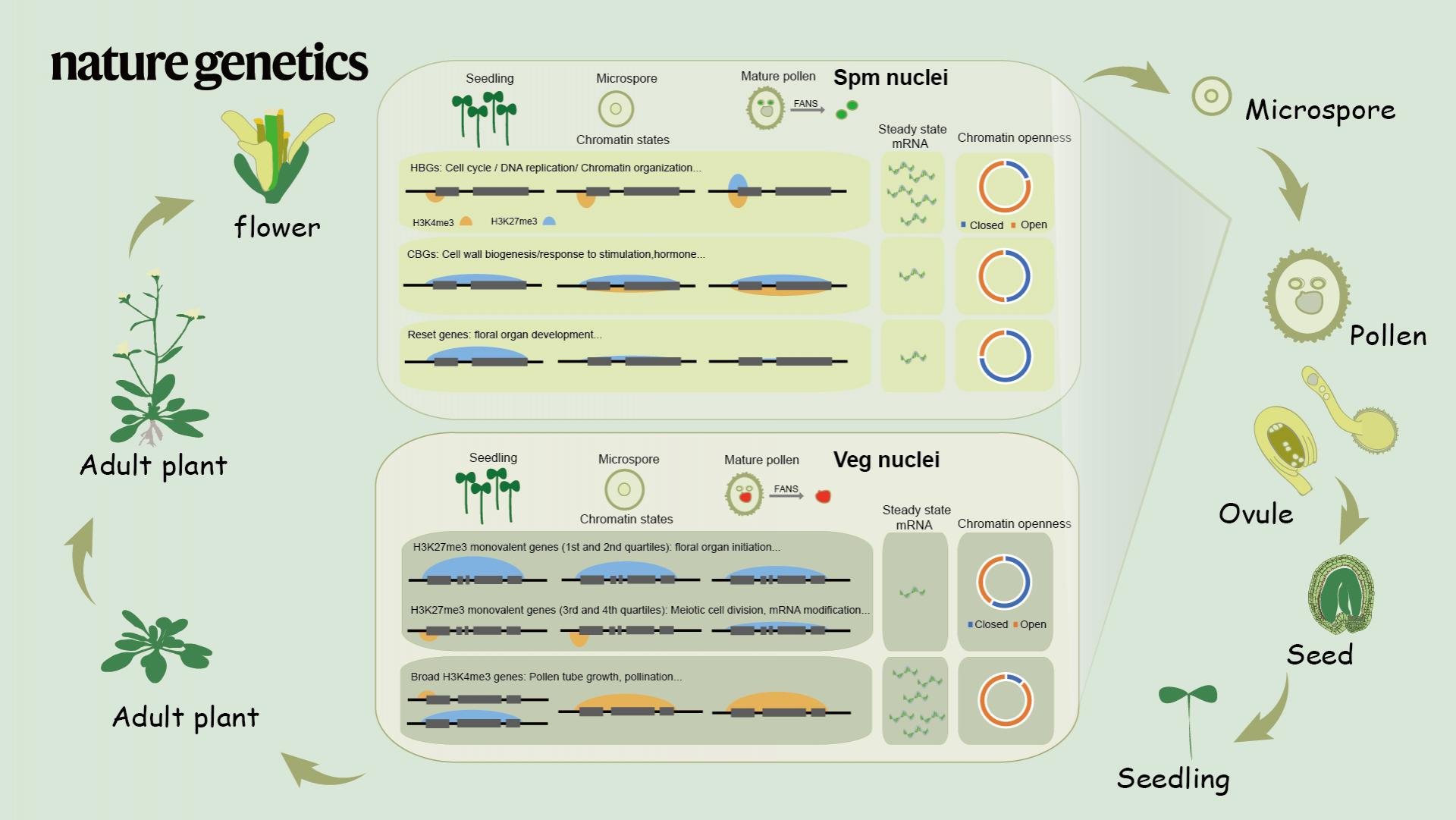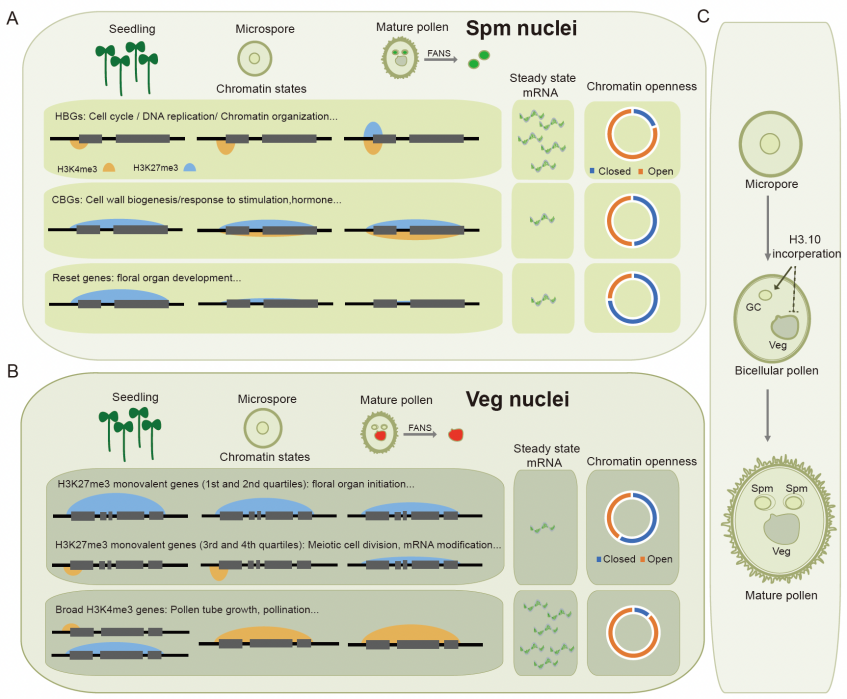Epigenetic marks such as histone modifications and DNA methylation is critical for determining and maintaining the cell identity. Although it is common that some epigenetic marks can be inherited through the mitotic division of a cell, transgenerational inheritance of epigenetic marks is rare in higher organisms such as humans. In mammals, serval rounds of global reprogramming of epigenetic marks during germline cell development and post-fertilization largely prevent transgenerational epigenetic inheritance. However, how epigenetic marks, especially histone modifications, are reprogrammed in plant germline is poorly understood.

Associate Professor Zhe Wu’s group and Assistant Professor Xi Chen’s group from the School of Life Sciences at the Southern University of Science and Technology (SUSTech) have recently uncovered the patterns as well as the mechanisms of histone mark reprogramming in the male germline in Arabidopsis thaliana, a model species for study flowering plant around the world.
This work, entitled “Distinct chromatin signatures in the Arabidopsis male gametophyte,” has been published in Nature Genetics, a world-renowned journal in the genetics field.
In this study, the authors solved the technical limitation of ChIP-seq in sorted cell types in male gametophyte (also known as pollen) by adapting a highly efficient transposase Tn5-based library construction technique and provided a comprehensive overview of the epigenome landscapes in microspore (Ms), sperm (Spm), and vegetative nuclei (Veg) (Fig. 1). They categorized the Spm and Veg chromatin into different domains according to the signatures of histone modifications. They then studied their dynamics of establishment and their links with underlying gene expressions and functions.
The researchers found that Spm chromatin is featured by widespread potential bivalency established by two different routes. Many H3K4me3 marked and expressed genes in Ms become bivalent in Spm through the gain of H3K27me3 around transcription start sites. In comparison, many H3K27me3 marked and repressed genes in Ms gain H3K4me3 at the gene body to become bivalent in Spm (Fig. 1a). The resetting of H3K27me3 does occur but was only restricted to a subset of developmental genes, which remain silenced in Spm. Thus, H3K27me3 presents at a significant level in Spm (Fig. 1a).
Consistently, depletion of histone variants H3.10 had a noticeable but relatively mild impact on H3K27me3 resetting in Spm (Fig. 1c). For Veg, its chromatin is reprogramed in a different way from Spm such that it is specified for pollination (Fig. 1b). In addition, Veg chromatin is generally more accessible than Spm, especially in the pericentromeric region, where H3K27me3 ectopically accumulates and H3K9me2 remains detectable. Overall, this work uncovered the dynamics and features of H3K27me3 reprograming in the male germline and shed light on epigenetic inheritance and rewiring across generations.

Figure 1. Summary of distinct chromatin signatures in sperm and vegetative nuclei. A) Key chromatin features in sperm. B) Key chromatin feature in vegetative nuclei. C) Cartoon illustration of pollen development. H3.10 incorporation in generative cell (GC) that promotes the formation of Spm chromatin identity by preventing the establishment of Veg H3K27me3 domains.
Danling Zhu, Research Assoc. Prof. from Assoc. Prof. Zhe Wu’s group, and Miss Yi Wen, a Ph.D. student from Asst. Prof. Xi Chen’s group at SUSTech, are the co-first authors of this paper. Profs. Wu and Chen are the co-corresponding authors. Ph.D. students Wanyue Yao, Sixian Zhou, and Qiqi Zhang from Prof. Wu’s group, Dr. Haiyan Zheng at Rutgers University, and Prof. Li-Jia Qu at Peking University also contribute to the research.
This work was funded by the National Natural Science Foundation of China (NSFC), Guangdong Innovation Research Team Fund, Shenzhen Sci-Tech Fund, Key Laboratory of Molecular Design for Plant Cell Factory of Guangdong Higher Education Institutes, and Shenzhen Key Laboratory of Gene Regulation and Systems Biology.
Paper link: https://www.nature.com/articles/s41588-023-01329-7
To read all stories about SUSTech science, subscribe to the monthly SUSTech Newsletter.
Proofread ByAdrian Cremin, Yingying XIA
Photo By